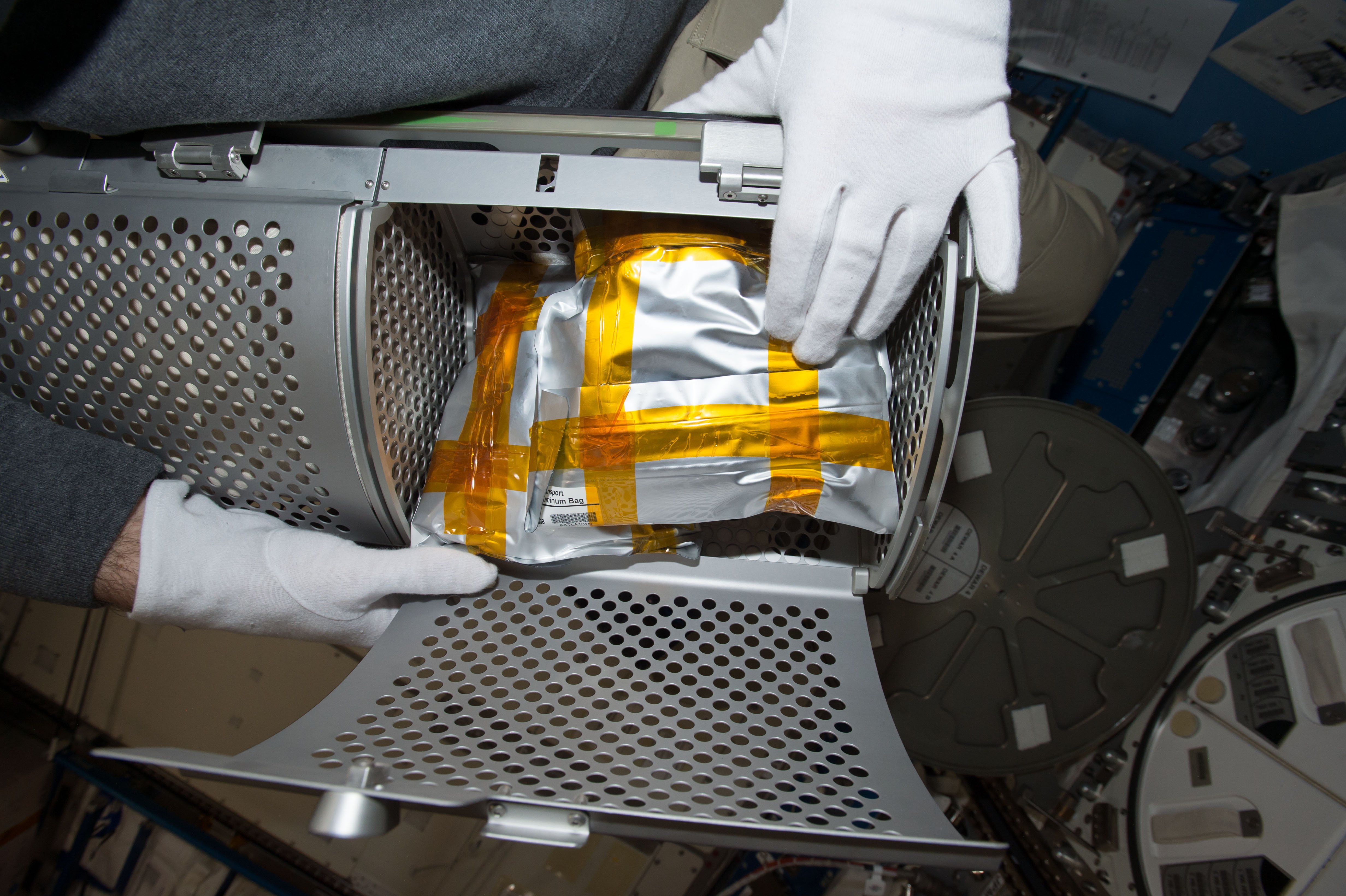- completed
[Auxin Transport]
Studies on gravity-controlled growth and development in higher plants using true microgravity conditions on the Japanese experiment module “Kibo” in the international space station
- Biology and Biotechnology
ISS Science for Everyone
SCIENCE OBJECTIVES FOR EVERYONE
The plant hormone auxin was discovered through the study of how plants respond to light, as described by Charles Darwin in 1880. Studies on Gravity-Controlled Growth and Development in Plants Using True Microgravity Conditions (Auxin Transport) clarifies the role of auxins in pea and maize (corn) seedlings grown in microgravity, leading to new insight into how gravity, or the lack of gravity, affects plant development.
Experiment Description
RESEARCH OVERVIEW
- The purpose of Studies on Gravity-Controlled Growth and Development in Plants Using True Microgravity Conditions (Auxin Transport) is to clarify the role of auxin in plant growth and development under microgravity conditions in space. Inhibition of auxin polar transport has been well known to induce similar plant morphogenesis (causing development of shape) observed in space.
- Based on the results of this space experiment, researchers can observe how gravity substantially affects plant growth and development on earth through the dynamics of the plant hormone auxin.
- In the future, humans will require sufficient plant and oxygen production in order to live in advanced space habitats. The full mechanism of plant growth and development, according to the response to gravistimulation on earth, is to be clarified. Additionally, this research can help to provide additional insight on how to utilize plants to provide more suitable and comfortable environmental conditions on earth.
DESCRIPTION
Using the microgravity environment, the research team seeks to verify that gravity induces a change of auxin transport ability in plants. This is accomplished by investigating the expression of PsPINs (ZmPINs) genes, the localization patterns of these PIN proteins, measuring the auxin contents and auxin transport rate in these plant stems.
In space experiments conducted on STS-95 in 1998, it was demonstrated that microgravity conditions substantially affected plant growth and development. Almost all of the epicotyls bent in a direction distal to the cotyledons, hook formation in etiolated pea seedlings was inhibited, and the growth direction of roots was affected. In addition, it was shown that auxin polar transport is essential for epicotyl bending in the early growth stage of etiolated pea seedlings. A step forward in the understanding of the cellular mechanisms involved in gravimorphogenesis has also been achieved using the microgravity conditions in space.
The purpose of Studies on Gravity-Controlled Growth and Development in Plants Using True Microgravity Conditions (Auxin Transport) is to clarify the mode of action of auxin on the growth and development of etiolated pea seedlings (Pisum sativum L. cv. Alaska), and maize (Zea mays L. cv. Golden Cross Bantam) seedlings, using the microgravity conditions on the Japanese Experiment Module “Kibo” in the International Space Station. The research team also introduces the application of chemicals affecting auxin polar transport, resulting that the epicotyls show automorphogenesis-like bending in true microgravity conditions in space. Additionally, the involvement of the auxin facilitators of PsAUX1 and PsPINs in the control of auxin polar transport, as well as the expression of genes encoding these facilitators, and intracellular concentrations of auxin in gravimorphogenesis of plants are investigated using immunohistochemical and physicochemical analyses, respectively.
Media Gallery

Applications
SPACE APPLICATIONS
Future long-term missions or colonies on the moon, Mars and asteroids will require plants for food and oxygen production, but scientists still need to understand how to grow plants in microgravity, where there is no clear distinction between up and down. This investigation develops new techniques for controlling plant growth direction by using plant hormones, including auxins, involved in plant development. Results also provide new techniques for efficiently growing and watering seedlings in microgravity, benefiting future life sciences investigations as well as plant cultivation on the International Space Station.
EARTH APPLICATIONS
Plants need nutrients, water and light to grow, but they also respond to gravity, which helps plants correctly orient their roots, stems and leaves. This investigation clarifies the effects of gravity on plant growth and development, and provides new insight into the gravity-sensing role of auxins.
Operations
OPERATIONAL REQUIREMENTS AND PROTOCOLS
A crew member provides water to plant seeds in the Plant Chambers, and incubates them in the Cell Biology Experiment Unit (CBEF). After 3.5 days (Run 1 to Run 3) or 5 days (Run 4) in the CBEF, the samples are removed from the chamber and fixed. All sampling and fixing operations should be carried out continuously to prevent sample desiccation. All observations are controlled from the ground and image data is downlinked. Chemical Fixation Bag is kept at +2°C in MELFI, and recovered at +4°C. All Auxin Tubes and Sampling Boxes are kept at -95°C, and recovered at -95°C.
Run 1: Experiment Start (Watering), CBEF insertion, CBEF removal, Sampling (Fixation), MELFI insertion.
Run 2: Experiment Start (Watering), CBEF insertion, CBEF removal, Sampling, RI treatment, Incubation at ambient, MELFI insertion.
Run 3: Experiment Start (Watering), CBEF insertion, Video downlink, CBEF removal, Sampling (Fixation), MELFI insertion.
Run 4: Experiment Start (Watering), CBEF insertion, CBEF removal, Sampling, RI treatment, Incubation at ambient, MELFI insertion.
Publications
PRINCIPAL INVESTIGATOR(S)
UEDA Junichi [Osaka Prefecture University]
Unless specified otherwise, rights to all images belong to ©JAXA



